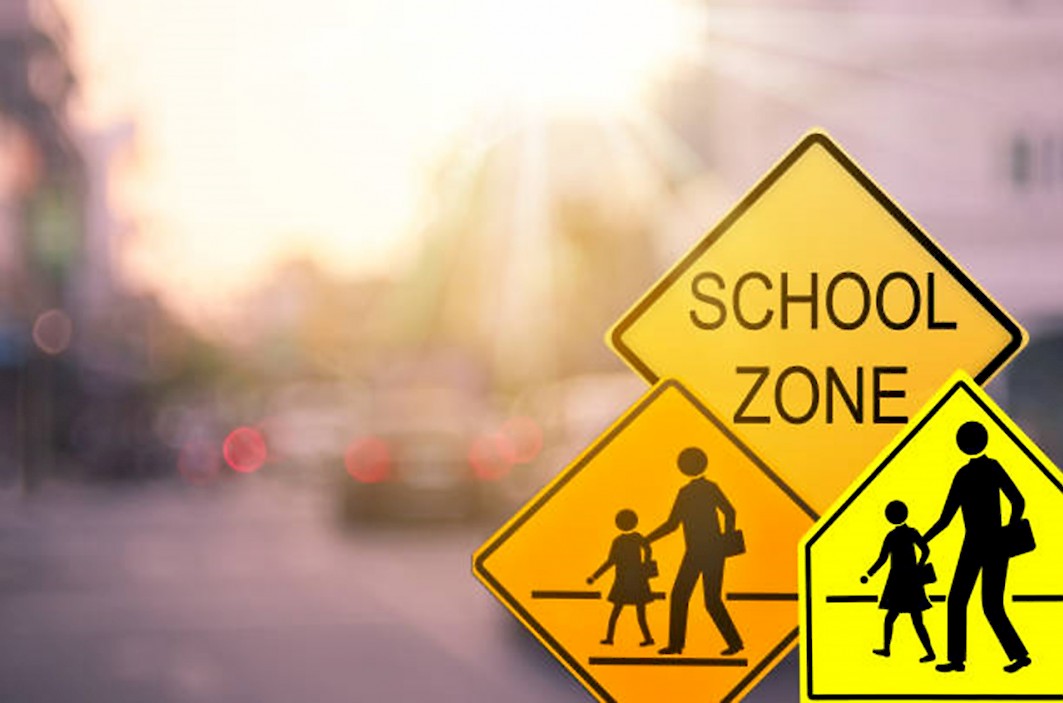Most recently published

Unleashing the Power of Amateur Radio in Times of Emergency
Scott Roberts and Desiree Baccus
June 21, 2023
Amateur radio operators are skilled communicators who serve as a lifeline during emergencies by relaying essential information, coordinating resources, and providing situational updates. On June 24-25, 2023, they will participate in the annual nationwide AARL Field Day event.

Swatting: Combatting a Lethal and Expensive Prank
Dan Scherr and Tanya M. Scherr
June 14, 2023
May 3, 2023, saw a rash of hoax calls claiming to report active shooters in schools across Tennessee. While the calls initially affected the Middle Tennessee area, the issue quickly moved to additional areas within the state, affecting at least 16 schools on the same day. Local, state, and federal

You’re the Leader. Now What?
Catherine L. Feinman
June 14, 2023
The National Oceanic and Atmospheric Administration (NOAA) reported that, as of May 8, the United States had experienced seven confirmed $1-billion weather/climate-related disasters in 2023. Three more storms that occurred in April may soon be added to that list. According to the Federal Emergency Management Agency (FEMA), 35 major

Food and Agriculture Sector Perspectives
Aurelia Berisha, Isaac Dietrich, Ben Dinsmore, Bert Cramer and Heather Allen
June 7, 2023
The U.S. Food and Agriculture (FA) Sector is composed of complex production, processing, and delivery systems that can feed people and animals both within and beyond the boundaries of the United States. Beyond domestic food production, the FA Sector also imports many ingredients and finished products, leading to a

Service Animal Awareness in Disaster Response
Melissa Resnick
June 7, 2023
Although they are companions to their human partners, service animals are not pets. Instead, they are trained to perform specific daily tasks, which are often still required when responders are assisting during a hurricane, mass casualty event, or another emergency. As such, emergency planning efforts should include service animals

CBRN Response Capabilities and Identified Gaps
Kenneth Bell
May 24, 2023
Despite advancements in field identification and classification of substances with advanced instrumentation and tools, there is still a response gap regarding the proper decontamination of instruments and the people who use them. Take steps now to bridge this gap.

Helping First Responders & the Public Bring Home Missing Kids
Michael Breslin and Trish McCall
May 24, 2023
An existential danger is the exploitation of children. As the threat landscape evolves, first responders have a paramount role to play in protecting these vulnerable populations and maintaining a resilient homeland security enterprise. One program leading the effort is creating a reason for hope.

Making Planning Documents More Than Words on Paper
Andrew (Andy) Altizer
May 17, 2023
President Harry S. Truman once said, “I believe in plans big enough to meet a situation which we can’t possibly foresee now.” However, terms like big and comprehensive do not always equate to size. Something that is laborious and unread adds no value for those tasked with managing emergencies and disasters. However,

Defining Workplace Violence
Kevin Jones
May 17, 2023
History has shown many instances where warning signs were missed before workplace violence occurred. However, understanding the five categories can help organizations and agencies prepare for and, ideally, prevent these types of incidents.

Challenges With Pediatric Mass Care Feeding
Michael Prasad and Jennifer Russell
May 10, 2023
The national-level guidance on mass care feeding for state, local, tribal, and territorial organizations (SLTTs) comes from the Federal Emergency Management Agency (FEMA), and is sourced from their toolkits and the National Mass Care Strategy website, which provides a consolidated and comprehensive set of guidance material from governmental and nongovernmental mass care experts. The

Keeping Schools Safe During the Threat of Nuclear Attacks
Tanya M. Scherr and Dan Scherr
May 10, 2023
The hands of the so-called Doomsday Clock are now set to 90 seconds to midnight, reflecting that experts believe the world is closer to a global nuclear catastrophe than it has ever been. All-hazards plans and threat assessments should reflect this potential increased threat.

Labor Trafficking – The Case Study of Marco
Richard Schoeberl, Anthony (Tony) Mottola and David Gonzalez
May 3, 2023
Countless immigrants like Marco do not self-identify as labor trafficking victims, yet this increasing crime needs to be addressed. Learn how communities can better protect these vulnerable populations.

Are Public Health Agencies Ready, or Just Prepared?
Raphael M. Barishansky
June 21, 2023
Is it time to retire the term public health preparedness and replace it with public health readiness? When building emergency planning efforts and response capabilities, jurisdictions and local health entities must reconfigure existing plans with the readiness factor in mind.

Unleashing the Power of Amateur Radio in Times of Emergency
Scott Roberts and Desiree Baccus
June 21, 2023
Amateur radio operators are skilled communicators who serve as a lifeline during emergencies by relaying essential information, coordinating resources, and providing situational updates. On June 24-25, 2023, they will participate in the annual nationwide AARL Field Day event.

Swatting: Combatting a Lethal and Expensive Prank
Dan Scherr and Tanya M. Scherr
June 14, 2023
May 3, 2023, saw a rash of hoax calls claiming to report active shooters in schools across Tennessee. While the calls initially affected the Middle Tennessee area, the issue quickly moved to additional areas within the state, affecting at least 16 schools on the same day. Local, state, and federal

You’re the Leader. Now What?
Catherine L. Feinman
June 14, 2023
The National Oceanic and Atmospheric Administration (NOAA) reported that, as of May 8, the United States had experienced seven confirmed $1-billion weather/climate-related disasters in 2023. Three more storms that occurred in April may soon be added to that list. According to the Federal Emergency Management Agency (FEMA), 35 major

Food and Agriculture Sector Perspectives
Aurelia Berisha, Isaac Dietrich, Ben Dinsmore, Bert Cramer and Heather Allen
June 7, 2023
The U.S. Food and Agriculture (FA) Sector is composed of complex production, processing, and delivery systems that can feed people and animals both within and beyond the boundaries of the United States. Beyond domestic food production, the FA Sector also imports many ingredients and finished products, leading to a

Service Animal Awareness in Disaster Response
Melissa Resnick
June 7, 2023
Although they are companions to their human partners, service animals are not pets. Instead, they are trained to perform specific daily tasks, which are often still required when responders are assisting during a hurricane, mass casualty event, or another emergency. As such, emergency planning efforts should include service animals

CBRN Response Capabilities and Identified Gaps
Kenneth Bell
May 24, 2023
Despite advancements in field identification and classification of substances with advanced instrumentation and tools, there is still a response gap regarding the proper decontamination of instruments and the people who use them. Take steps now to bridge this gap.

Helping First Responders & the Public Bring Home Missing Kids
Michael Breslin and Trish McCall
May 24, 2023
An existential danger is the exploitation of children. As the threat landscape evolves, first responders have a paramount role to play in protecting these vulnerable populations and maintaining a resilient homeland security enterprise. One program leading the effort is creating a reason for hope.

Making Planning Documents More Than Words on Paper
Andrew (Andy) Altizer
May 17, 2023
President Harry S. Truman once said, “I believe in plans big enough to meet a situation which we can’t possibly foresee now.” However, terms like big and comprehensive do not always equate to size. Something that is laborious and unread adds no value for those tasked with managing emergencies and disasters. However,

Defining Workplace Violence
Kevin Jones
May 17, 2023
History has shown many instances where warning signs were missed before workplace violence occurred. However, understanding the five categories can help organizations and agencies prepare for and, ideally, prevent these types of incidents.

Challenges With Pediatric Mass Care Feeding
Michael Prasad and Jennifer Russell
May 10, 2023
The national-level guidance on mass care feeding for state, local, tribal, and territorial organizations (SLTTs) comes from the Federal Emergency Management Agency (FEMA), and is sourced from their toolkits and the National Mass Care Strategy website, which provides a consolidated and comprehensive set of guidance material from governmental and nongovernmental mass care experts. The

Keeping Schools Safe During the Threat of Nuclear Attacks
Tanya M. Scherr and Dan Scherr
May 10, 2023
The hands of the so-called Doomsday Clock are now set to 90 seconds to midnight, reflecting that experts believe the world is closer to a global nuclear catastrophe than it has ever been. All-hazards plans and threat assessments should reflect this potential increased threat.
Planning for Future Events Requires Updated Plans
Catherine L. Feinman
April 26, 2023
Threats, hazards, and risks change over time as numerous variables change. This means preparedness professionals must be forward-thinking when planning for emergencies and disasters. Past events can teach valuable lessons for the future, and sometimes those lessons include adapting old plans to meet new or emerging challenges. The authors in
Eclipses Again Will Darken the Sky in 2023 and 2024
Laurel J. Radow
April 26, 2023
An eclipse is not just about the sky getting dark. There are many considerations for emergency planners and public safety professionals to ensure the safety of their communities. Learn the lessons from the 2017 eclipse to better prepare for the next event.
Preparedness Promoters – Assessing Marginalized Populations
Maxwell Palmer
April 26, 2023
Certain populations are more vulnerable when faced with disasters. By adapting a public health model, community leaders can identify common vulnerability indicators and close the gaps between emergency management plans and target population vulnerabilities. Learn how.
Covenant School – Reviewing Another Tragic Shooting
Tanya M. Scherr and Dan Scherr
April 19, 2023
The Covenant School shooting is another reminder of active shooter trends. This article reviews the chain of events from that tragic event, post-incident reviews, and what communities are and should be doing to prepare for and prevent future active shooter incidents.
Labor Trafficking – An Underreported Escalating Crisis
Richard Schoeberl, David Gonzalez and Anthony (Tony) Mottola
April 19, 2023
Labor trafficking affects many more people in the U.S. than sex trafficking, but it gets much less attention. Learn what the government is doing and what else community stakeholders can do now to better protect people from this growing threat.
The DoD Defense Coordinating Element and How It Is Certified
Patrick McNiece
April 12, 2023
Besides the main mission of defending the homeland, Department of Defense capabilities also provide critical support to local, state, and federal civilian partners during major disasters. Learn how Army North’s defense coordinating element’s mission and composition ready their units to perform this additional mission when needed.
Biosafety Laboratory Issues and Failures
Robert C. Hutchinson
April 12, 2023
Concerns regarding unexpected biological incidents and their public health implications were discussed in a 2014 Domestic Preparedness biosecurity and bioterrorism article. From the improper possession and storage of decades-old live smallpox virus in a former Food and Drug Administration laboratory (lab) on the National Institute of Health (NIH) campus to
Hazmat on the Rail
Glen Rudner
April 5, 2023
Since February 3, 2023, following the train derailment in East Palestine, Ohio, the public has closely followed reports and commentary by media outlets and elected officials. This incident has become more controversial and publicized than others in recent years and has caused a public outcry for change.
Preparing the Next Generation for Increasing Disasters
Kay C. Goss
April 5, 2023
Preparing the next generation of emergency preparedness and response professionals requires educational programs that teach critical thinking and life-saving strategies. Many programs and resources address these needs, but more educational and collaborative opportunities should be considered to meet the growing needs.
Information Sharing – A Powerful Life-Saving Tool
Catherine L. Feinman
March 29, 2023
Information sharing is a valuable tool used for various purposes. However, this tool’s power in preparing for and responding to emergencies should not be underestimated. Unfortunately, critical information and data can sometimes be misused, not effectively leveraged, not shared, or simply ignored. In these scenarios, it is more difficult to
Guidance for Preparing Professionals Mentally for the Worst
James Greenstone and Weldon Walles
March 22, 2023
Professional groups have debated and researched the best practices relating to the standards and quality of care sufficient to maintain minimum standards during a disaster. Due to the fluid nature of a disaster, it is difficult to abide by a standard that will fit every situation. For example, the onset
Challenging the Next Generation to Communicate Preparedness
Chris Sheach
March 22, 2023
No single communication solution can apply to every situation. To better prepare the next generation of public safety professionals, one professor is challenging young adults to develop social media messaging that reaches diverse populations and encourages action to protect lives and property during emergencies.
Follow Us
Get Instant Access
Subscribe today to Domestic Preparedness and get real-world insights for safer communities.


